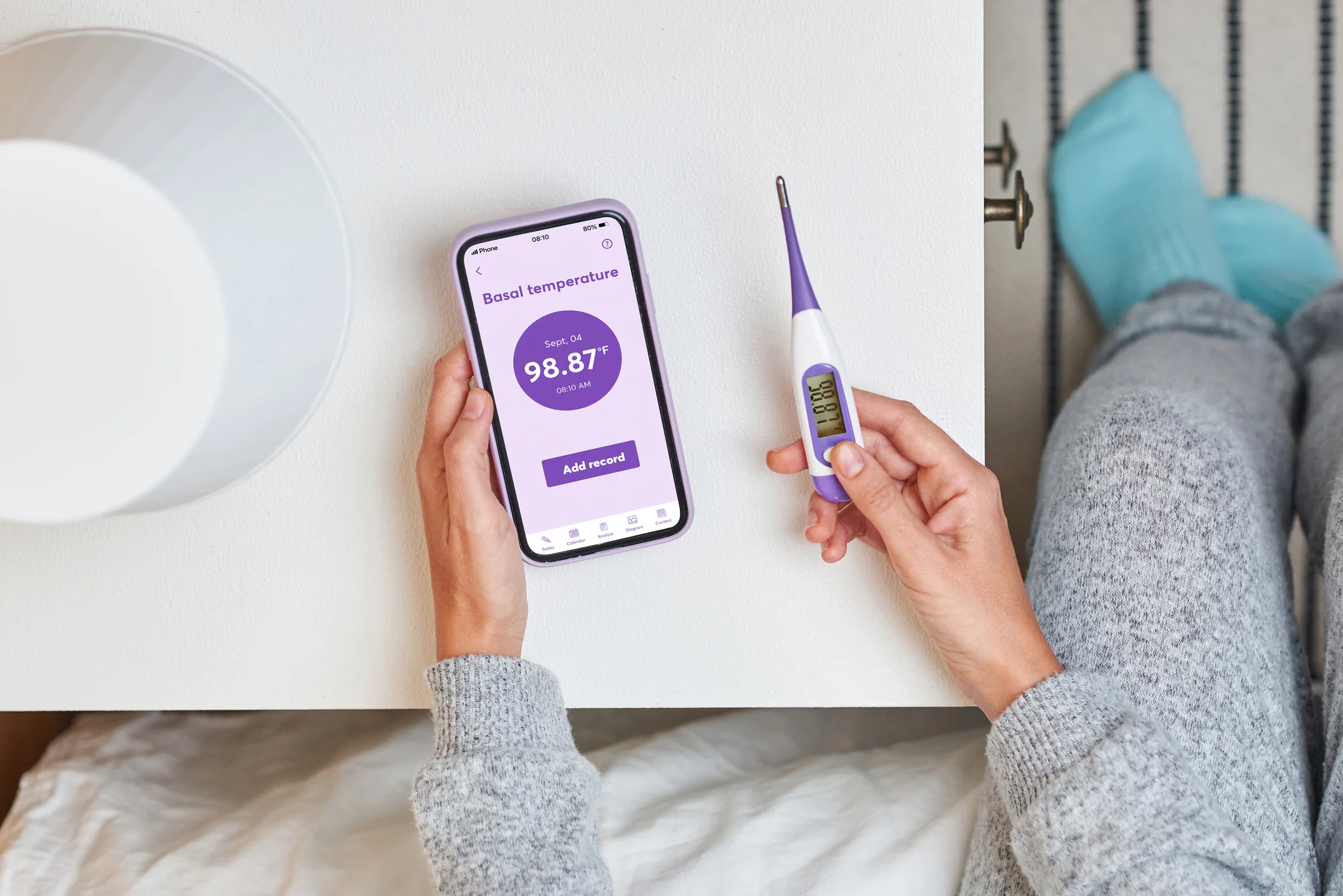When it comes to assessing your fertility potential and finding the ideal conception window, there is no better way than tracking your period.
Understanding the menstrual cycle
Menstruation indicates the end of the cycle during which the uterine lining and unfertilized egg sheds from the body during a period. But this is only one part of a delicate process that women undergo each month as their bodies complete the entire menstrual cycle.
The menstrual cycle begins on the first day of your period, starting what is known as the follicular phase. A follicle is a fluid-filled sac in the ovary that will develop into a mature egg during this phase. Once an egg reaches full development, it is released by the ovary during a process called ovulation. From there, the egg will travel down the fallopian tube on the way to the uterus in hopes of being fertilized by a sperm.
Follicle-stimulating hormone, the hormone responsible for spurring egg development, also cues the uterus to thicken the uterine lining in preparation for a potential pregnancy.
While it may take several days for the follicular phase to be complete, there is only a 24-hour window from the time an egg is released from the ovary where it can be fertilized to create a pregnancy.
Once ovulation occurs, the menstrual cycle exits the follicular phase and begins the luteal phase, which will continue until the first day of the period. At this time, the body also releases progesterone to mature the uterine lining to help a fertilized egg attach to the uterine wall. If a pregnancy doesn’t occur, progesterone levels drop and this causes the period to begin.
With so many complex processes working in tandem, it’s understandable that the body may need some help.
Your menstrual cycle can indicate fertility problems
There are several different menstrual factors that can impact fertility and indicate potential issues. Some you can detect on your own and for others, you will need the help of a physician to do testing and evaluation.
The first step is to track your cycles carefully every month using an app on your phone. Make note of the day your period starts and ends as well as symptoms such as extreme pain or heavy bleeding.
The average monthly cycle is between 21-35 days and should only vary in length by a couple of days per month. If your cycles are absent, shorter than 21 days, longer than 35 days or vary by several days per month, this indicates an irregular period, which may impact ovulation. If you aren’t ovulating, you can’t get pregnant.
The key factor to keep in mind is whether or not cycles are consistent in length from month to month. Some women have longer or shorter cycles, but if they only vary by a couple of days per cycle and ovulation is confirmed, there is likely nothing to worry about.
Many forms of birth control prevent a period from occurring. Unfortunately, there is no way to determine how a period is impacting fertility without allowing the full menstrual process to happen. When a woman goes off birth control, it “unmasks” any existing issues that have been hidden. Menstrual cycles should return to normal within a month of going off contraception.
This is precisely why it is so important to track your periods. Seeing how your cycles change from month to month as well as how long your period is will help you understand where you stand from a fertility perspective.
For women with periods lasting longer than seven days, this may be an indicator that ovulation is not occurring or that a medical issue is present. The cause of lengthy periods can indicate a lack of ovulation or the presence of polyps or fibroids, but can also signal other issues such as cancer or infection.
In women that are not experiencing a period at all, it is likely that ovulation is not occurring. This can happen when women are underweight but can also occur for other medical reasons.
Irregular or absent cycles can be the result of many different potential issues – high amounts of stress, being under or overweight, polycystic ovarian syndrome, eating disorders, thyroid issues, pituitary disorders, and extreme exercise. Ovulation issues are the most common cause of infertility challenges and with many patients, ovulation can be restored through medication and/or positive lifestyle changes.
Women can help ovulation return naturally by gaining or losing weight in order to fall into a healthy weight and normal body mass index (BMI), reducing stress, aiming for regular exercise, minimizing alcohol and caffeine intake, and eating a diet rich in whole grains, fruits, veggies, healthy fats, and lean protein.
If you track your periods for a few months and find cause for concern, don’t hesitate to visit a medical professional for an evaluation. The sooner these problems are addressed, the faster you can achieve your family planning goals.
If you track your periods for a few months and find cause for concern, don’t hesitate to visit a medical professional for an evaluation. The sooner these problems are addressed, the faster you can achieve your family planning goals.
If you are unsure whether or not you are ovulating and would like to learn more, here is another blog that can help: Am I Ovulating? 7 Signs You Are, 3 Signs You Aren’t
Medical contribution by Elie Hobeika, M.D.
Dr. Hobeika is board certified in both Obstetrics and Gynecology and Reproductive Endocrinology and Infertility. He has studied with world leaders in PCOS and recurrent pregnancy loss and is fluent in English, French, and Arabic.








